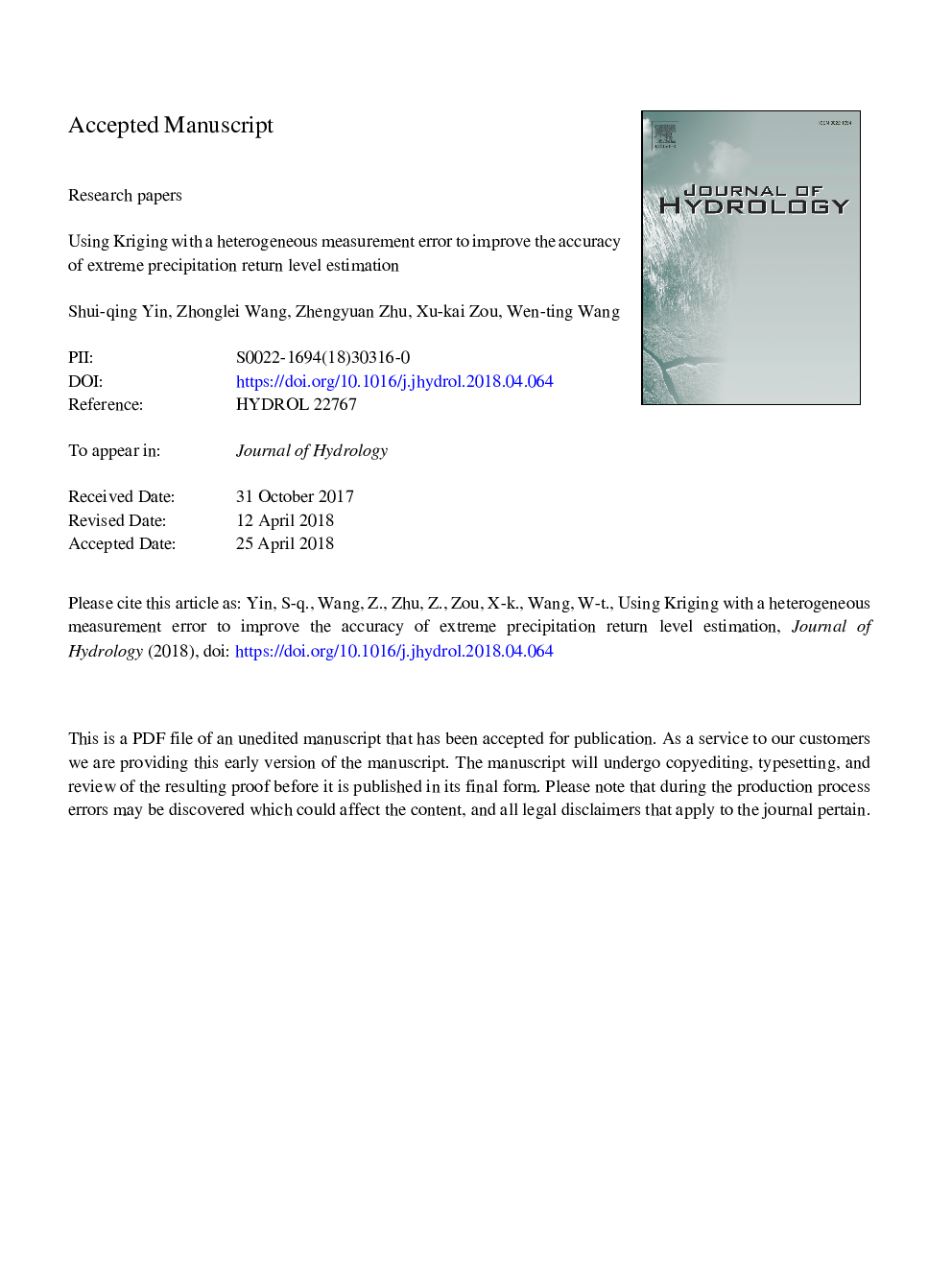| Article ID | Journal | Published Year | Pages | File Type |
|---|---|---|---|---|
| 8894681 | Journal of Hydrology | 2018 | 33 Pages |
Abstract
Extreme precipitation can cause flooding and may result in great economic losses and deaths. The return level is a commonly used measure of extreme precipitation events and is required for hydrological engineer designs, including those of sewerage systems, dams, reservoirs and bridges. In this paper, we propose a two-step method to estimate the return level and its uncertainty for a study region. In the first step, we use the generalized extreme value distribution, the L-moment method and the stationary bootstrap to estimate the return level and its uncertainty at the site with observations. In the second step, a spatial model incorporating the heterogeneous measurement errors and covariates is trained to estimate return levels at sites with no observations and to improve the estimates at sites with limited information. The proposed method is applied to the daily rainfall data from 273 weather stations in the Haihe river basin of North China. We compare the proposed method with two alternatives: the first one is based on the ordinary Kriging method without measurement error, and the second one smooths the estimated location and scale parameters of the generalized extreme value distribution by the universal Kriging method. Results show that the proposed method outperforms its counterparts. We also propose a novel approach to assess the two-step method by comparing it with the at-site estimation method with a series of reduced length of observations. Estimates of the 2-, 5-, 10-, 20-, 50- and 100-year return level maps and the corresponding uncertainties are provided for the Haihe river basin, and a comparison with those released by the Hydrology Bureau of Ministry of Water Resources of China is made.
Related Topics
Physical Sciences and Engineering
Earth and Planetary Sciences
Earth-Surface Processes
Authors
Shui-qing Yin, Zhonglei Wang, Zhengyuan Zhu, Xu-kai Zou, Wen-ting Wang,
